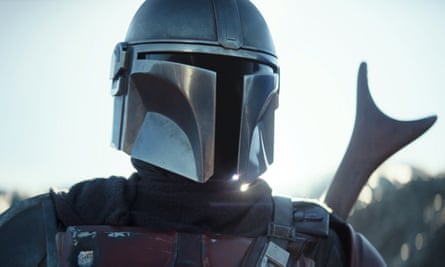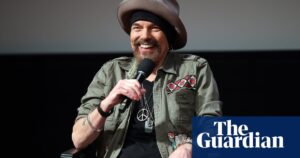When the Fight Club author Chuck Palahniuk described modern consumer culture as “a copy of a copy of a copy”, he was probably thinking of Ikea churning out coffee tables with all the personality of an overcooked noodle, rather than the next episodes in a long-running space opera known for heroes who use quizzically reversed syntax. Nevertheless, he might easily have been talking about Star Wars, and the once great saga’s descent into self parody in the wake of reports from Hollywood that the future of the franchise on the big screen is to be based on … yep, you read it right … Daisy Ridley’s Rey.
It had already been announced that Rey, whose presence lent the sequel trilogy all the emotional resonance of a damp tea towel, will return for a movie set 15 years after the events of the execrable Rise of Skywalker, as she endeavours to build a new Jedi order. (Sharmeen Obaid-Chinoy is attached to direct.) That was worrying enough for those fans of the saga still reeling from the most recent episode’s attempts to tie up loose ends by lighting them on fire and hoping nobody noticed. But according to the Hollywood Reporter, Lucasfilm has decided that Rey is now seen as Star Wars’ “most valuable cinematic asset” – admittedly because “the closet is a little bare” following the deaths either on or off screen of pretty much the entire cast of the original trilogy.
It’s hard to argue with this – except to point out that if Mark Hamill’s Luke Skywalker and Harrison Ford’s Han Solo are no longer available for new Star Wars adventures in the current timeline, it is almost completely Disney and Lucasfilm’s fault for killing them off in the first place. However there are solutions that would allow both characters to return in other, earlier eras, as has already taken place to greater and lesser success in the Mandalorian and Boba Fett TV series (in which Hamill appeared via motion-capture technology as a brilliantly de-aged take on Luke) and the middling movie Solo, which tried and failed to recast the role of the galaxy’s most sardonic Corellian smuggler. Sadly, Carrie Fisher’s Leia is probably lost to us for ever following the actor’s death in 2016, but even here there is some hope, given the character appeared in a youthful incarnation in the same year’s Rogue One: A Star Wars Story.
Reports emerged last week that the new Star Wars trilogy is being shepherded by writer-producer Simon Kinberg, who is perhaps best known for 20th Century Fox’s mercurial X-Men films of the 2000s. According to the Hollywood Reporter’s sources, Rey will play some kind of role, which suggests the films will be set in the period post Rise of Skywalker. This seems bizarre, given that all the interesting Star Wars stuff right now is happening in the post-original trilogy era occupied by The Mandalorian and the forthcoming big-screen entry The Mandalorian and Grogu, directed by Jon Favreau. In this context, returning the Star Wars timeline to the period following the Emperor’s second (and far more tedious) demise feels like dragging it back to a plot that’s been vacuum-sealed in fan indifference while the real action is off somewhere sipping blue milk with Baby Yoda.

One fears that all these sequels will represent little more than Force ghosts of the originals: nostalgia machines that have run out of nostalgia to mine and have decided instead to pump out endless lightsaber cameos, each one dimmer than the last, while desperately clinging to the idea that a slightly shinier Tie fighter might distract us from the lack of story.
It’s actually quite despicable, because the only way this could happen is if the people in charge had absolutely no idea why Star Wars was great in the first place, and are instead relying on algorithms (the midi-chlorians of the social media age) to drive this whole, hulkingly aged pile of space junk forward.
We know that is not always the case, because it’s obvious that the likes of Favreau and Lucasfilm chief creative officer Dave Filoni genuinely care about this universe. Even when some of the recent Disney+ TV shows, such as the weirdly vapid Ahsoka, are not quite up to scratch, there is enough magic to keep us tuned in for the next trip into the light, cosmic telly fantastic.
after newsletter promotion
And yet, on the big screen, there seems to be no plan other than to wait until one of these shows really blows up (for example The Mandalorian) and then transfer it to the multiplex. In the absence of any better idea, this is sort of fine. But one thing is certain: if Rey really is the best last hope for the future of the movie franchise that basically invented the blockbuster, then the Force (and just maybe the whole of Hollywood itself) is in even worse shape than anyone previously thought.
Perhaps what the galaxy really needs at this juncture is a long nap to the strains of a holographic meditation app featuring calming Wookiee roars and the gentle hum of discreetly deactivated lightsabers. Because at this rate, the final chosen one might be a Lucasfilm intern who manages to locate a long lost original plot point beneath the dusty ruins of a once majestic Death Star.
Source: theguardian.com

















